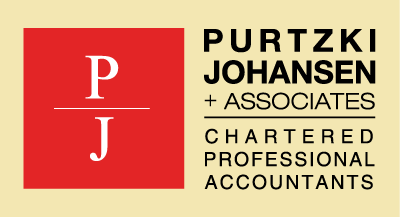
Here are some year-end tax planning ideas of how you can reduce your income tax bill for 2020.
1. Strip money from Inc. at capital gains tax rates
Ponder for a moment the B.C. personal tax rates for 2020 when your income exceeds $220,000:
Regular income: 53.50%
Regular dividends: 48.89%
Capital gain: 26.75%
Look at the wide spread in the tax rates on capital gains and dividends.
If you take out a $100,000 dividend, your income tax is $48,890. The income tax on a capital gain of $100,000 is only $26,750. The difference is $22,140, which is a 45% tax saving!
It is not too late to implement a mechanism to pay capital gains tax on your shareholders draws for 2020. The tax savings on just a draw of $100,000 are big enough to have Santa put a brand-new car under the Christmas tree.
It is definitely worth a telephone call to your PJ&A advisor to see how we can help with your year-end tax planning.
2. Pay tax-free dividends if you can.
You may be able to make tax-free withdrawals from your corporation by paying yourself capital dividends. Capital dividends are available if your corporation has a balance in its capital dividend account (CDA). The CDA balance is increased by the non-taxable portion of capital gains and reduced by the non-deductible portion of capital losses.
3. Triggering gains or losses.
Check with your PJ&A advisor to find out if there is a benefit to selling investments with accrued losses to offset capital gains. Any net capital loss that cannot be used in the current year can be carried as far as three years back or carried forward indefinitely to offset net capital gains in other years. Depending on your unique tax situation, there often is a benefit to triggering capital gains this year.
4. Why you want to wait to make investments until after the year-end.
With the ultra-low interest rates, many investors are purchasing longer-term interest-bearing securities to improve the return on their investment. If you want to invest in interest-bearing securities that have a maturity of one year or longer, consider delaying the purchase until after December 31. Why? You will not have to pay tax on any accrued interest until 2022, the year of the first anniversary of the investment. Consider as well to wait until next year to purchase mutual funds that are expected to make taxable distributions before the end of 2020. Otherwise, you will face an unnecessary tax bill for 2020.
5. Donate securities to charity.
Suppose you are looking to reduce your personal tax bill and help your favourite charity at the same time. In that case, there is no better way than donating securities that have appreciated. You receive a double benefit. First, you avoid the capital gains tax, and then you get the tax break on the donation itself.
6. Make loans to split investment income
If you are in a high tax bracket, you can arrange to shift investment income to family members in a lower tax bracket. To do this, you simply lend funds to family members provided the rate of interest on the loan is at least equal to the CRA-prescribed rate, which currently is 1per cent. If you implement the loan arrangement this year, the 1 per cent interest rate is locked in and will remain so for the duration of the loan. The income is taxed at the family member’s tax rate and the interest on the loan for each calendar year must be paid annually by Jan. 30 of the following year. The interest is deductible against the investment income of the family member.
7. Contribute to an RESP
Take the edge off the high cost of post-secondary education by contributing to a RESP before the end of the calendar year. A contribution of $2,500 will generate the maximum annual education savings grant of $500, or 20 per cent of the contribution. The lifetime maximum savings grant per child is $7,200.



